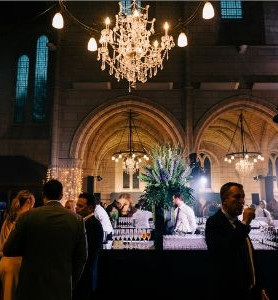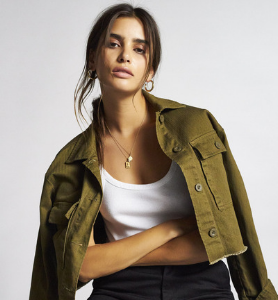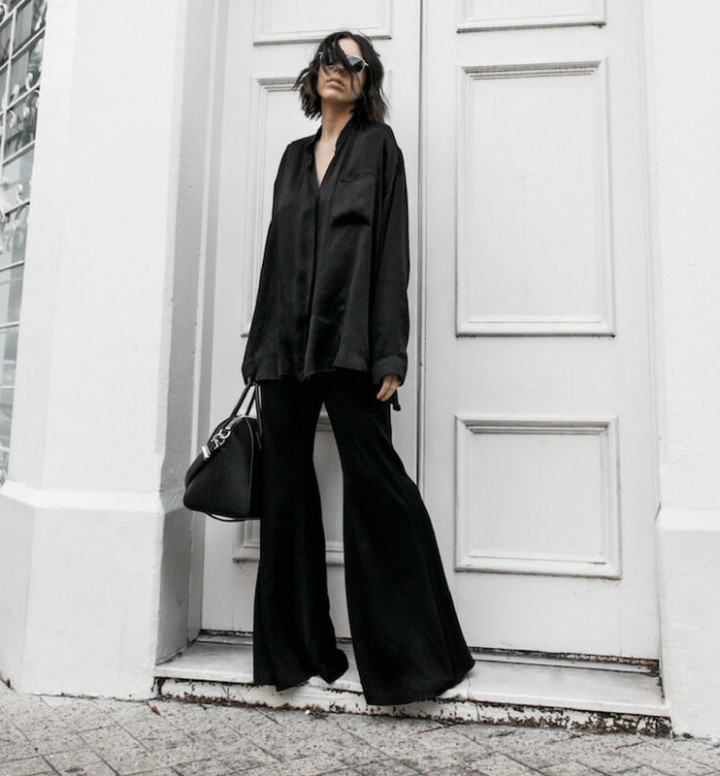NZFW’s second day showed Juliette Hogan, Taylor, Harris Tapper and Yu Mei balancing art, intention, and New Zealand identity
While NZFW started last night with what seemed like the perfect encapsulation of everything that makes New Zealand fashion feel as thoughtful and as curious and as rapid as we all know it can be, day two felt somewhat more languid—it hasn't had the same busy-ness we're bracing ourselves for in the days to come—and there's moments—both lengthy and brief—that remind us that our industry is very easily cool and considered.
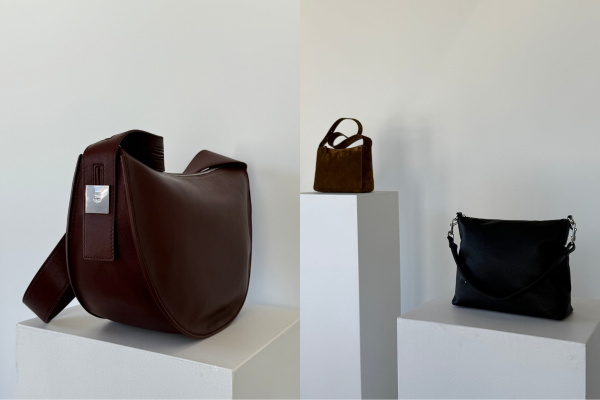
Yu Mei. Matters of Material
At Coastal Signs on Karangahape Road, Yu Mei marked its ten-year anniversary not with a runway, but with a conversation. ‘Matters of Material’ gathered founder Jessie Wong, architect Dahlia Ghani, and artist-curator Isaac Te Awa, moderated by Vogue Australia’s Jonah Waterhouse, in a panel that set out to ask what it really means to work with intention.
Backdropped by new additions to the Yu Mei range—structured shapes, suedes in earth-heavy tones, subtle flashes of hardware—the brand’s future was framed by its past. Wong unveiled show notes structured around tens: ten collaborators, ten meals, ten agonised-over colours, ten campaign locations. It read like an archive of a decade, equal parts personal memory and design ledger.
The panel spoke to a shared language of materials. Ghani urged the audience to imagine creative practice designed less with ego and more with context. Te Awa, who learned to weave from his koro, reminded us of the privilege of working with taonga, and of recognising material as collaborator rather than mere medium. ‘We’re no longer in an age of abundance,’ he said. ‘What you create is dictated by what you receive.’
For Wong, that philosophy is embedded in the brand’s obsession with New Zealand deer nappa, a uniquely local resource she fought to preserve after supply chains shifted. Yu Mei remains the only handbag brand to offer it, and her process begins not with a sketch but with the material itself: feeling for its language, responding to its possibilities, resisting control.
Taken together, the discussion felt like an unguarded manifesto for Yu Mei’s next decade. Less logo (if even possible), more substance. Less excess, more response. It was an invitation to look at a bag not as a product, but as a record of relationship—between designer, material, and the histories they both carry.
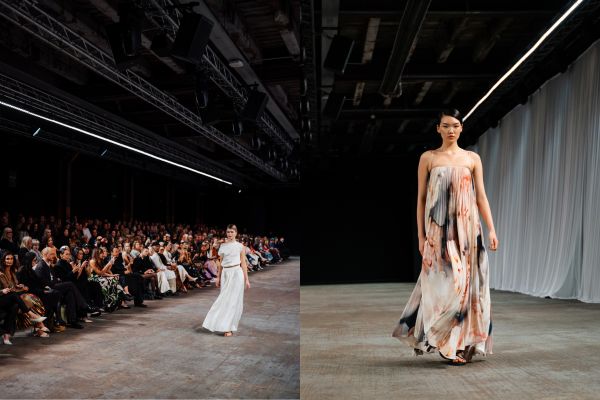 Images via Radlab.
Images via Radlab.
Juliette Hogan
Juliette Hogan opened her NZFW show with the kind of clothes that don’t beg for attention but hold it anyway. Loose draping, dresses cinched by barely-there drawstrings, fabrics that blurred like watercolours. And then, of course, a pivot: sharp A-line skirts, cropped structured tops, and trousers so well cut they’ll be impossible to forget.
The palette drifted from soft romance into near-electric florals—unexpected, but still within Hogan’s orbit of refinement. A set (that at least looked like, from what I could tell) crushed silk, a full skirt with a draped top, nailed that balance of ease and polish. Sheer was handled with the designer's usual light touch: full skirts that moved with volume rather than fuss. One of the more interesting contrasts came from gauzy, gathered tops styled with tailored shorts, proving Hogan can do whimsy and precision in the same breath.
There was also a streak of off-duty cool—one that this designer knows well. Palazzo pants paired with triangle bikini tops and oversized shirts cropped up again and again, looking like the sort of thing you’d throw on after a swim and somehow still manage to pull off at dinner. Beauty followed the same thinking—slick hair, Raaie's fresh skin, no excess.
And when the show seemed to be over, the curtain pulled back to reveal fresh blooms and freshly-topped champagne. Not dramatic, more like a gesture: a reminder that celebration doesn’t always need sequins or spectacle. After all, Juliette Hogan has always known her lane, but she’s smart enough to edge past expectation. It felt in step with her approach: a designer who knows her aesthetic and sticks to it, while giving just enough variation to keep her audience leaning in.
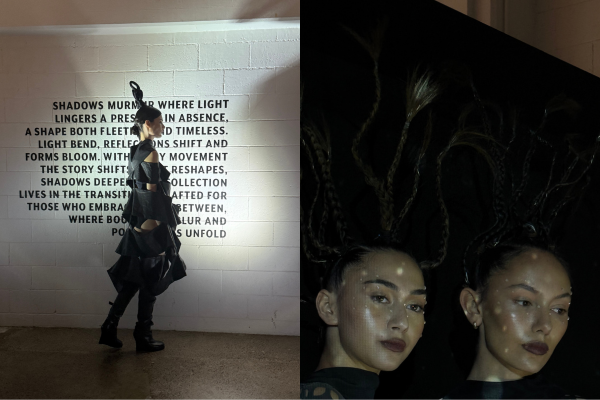
Taylor
Taylor’s Shadowplay didn’t just take over The Shelter—it reimagined it entirely. The space became part installation, part performance, (and part party, of course), with models holding a series of vignettes that blurred the line between fashion presentation and art. The clothes themselves shifted between sharp tailoring and looser drapery, as Vicki Taylor always does so well, alternating structure with deconstruction. It was modern gothic in mood, dark and a little haunting, but also firmly grounded in design.
The beauty direction was standout: hair twisted and braided into abstract shapes that felt somewhere between Pippi Longstocking and Medusa. It was striking without tipping into gimmick, and easily one of the strongest beauty moments of the week so far.
Throughout the show, models danced or tossed chalk into the air, underlining that this wasn’t a straightforward runway. The show notes promised something to the effect of 'stepping into a moodboard,' and that rang true—it felt like walking into the designer’s thought process. Pieces seemed to breathe and move on their own, hinting at lives and stories beyond the catwalk.
Vicki Taylor has been showing for 26 years, yet she describes still finding herself caught by sudden sparks of inspiration—sometimes a mood, sometimes just a fleeting feeling. Shadowplay felt like art at its most wearable: rigorous in its construction, yet never denying the pull of intuition. Standing in the space, you couldn’t shake the impression of entering an artist’s installation and being invited to stay awhile.
Ultimately, it was unmistakably Taylor: cerebral, crafted, a little unsettling, and utterly memorable.
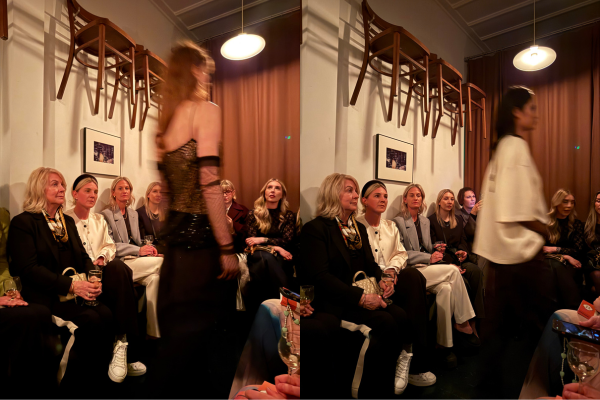
Harris Tapper
Harris Tapper’s NZFW debut unfolded not in a stark venue but inside Blue, the Franklin Road café and wine bar that feels more like an evening with friends than a runway space. We're told around 120 guests packed into every cranny of the space, gimlets in hand, balancing plates of Kiwi dip chips portioned into single serves. On each chair sat a different Penguin Classic—an offbeat touch that gave the evening its quiet literary slant.
The clothes carried the same duality: sharp but softened, simple but charged with detail. There was a hand-beaded jacket, sheer fabrics dotted in miniature prints, lace and crushed silk that caught the light in unexpected ways. The brand’s signatures—parka, Tilmens blazer—reappeared, but were reworked with sheer gloves and easy layering. A voluminous skirt shaped the silhouette into something sculptural, while accessories leaned playful: drawstring bags, knotted beads that felt familiar and nostalgic, and a beaded cap—a fresher counterpoint to the crochet versions everywhere else this season.
Hair was undone, eyes smoked dark, the styling kept deliberately high-low. The effect was dreamlike but not distant; simplicity held its ground, as it always does at Harris Tapper.
The finale came to Paint It Black, the models’ walk met with loud, percussive clapping that filled the small space. Many (in our room, at least) waited for Sarah Harris and Lauren Tapper to take their bow, but instead the designers chose the opposite gesture—waiting at the bottom of the stairs, greeting each person as they left. A closing note that underscored the point of the night: fashion can be intimate, and the best moments are the ones that draw you in.



